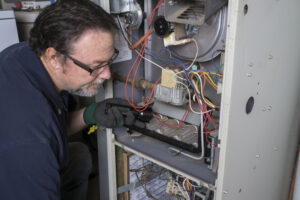Sealing and Insulation Will Ensure Your Home Stays Comfy and Efficient Year-Round
Summertime in the Sarasota area offers the ideal weather for all things fun under the sun – barbecues, outdoor play, sunbathing and more. Even if you’re among those who love the heat, you probably look forward to finding relief in a cool home at the end of the day. But using the air conditioner more often means an increase in utility costs. The good news is that with proper sealing and insulation, you can maximize your home’s energy efficiency and curb some of those cooling costs. A well-sealed and insulated home will keep your home more comfortable all year round while using less energy.
Why Air Sealing and Insulation Are Important
Air leaks are common, but significant sources of energy waste and increased utility costs. For that reason alone, you should take care of them. But there are many other reasons this should be a high priority. Improving indoor air quality and lowering your carbon footprint are among them. Additionally, energy loss forces an HVAC system to work extra hard in its attempt to keep your home feeling comfortable. When such pressure is put on the system, breakdowns are more likely and its life expectancy may be reduced.
Sealing air leaks is a fairly simple, low-cost job that will result in huge energy savings. But to make your home as efficient as possible, you should make sure you have a good amount of insulation as well. The two work in harmony together, allowing you to rely less often on your HVAC system while keeping your home nice and comfortable. However, adding insulation should only be done after air leaks are closed. According to the U.S. Department of Energy (DOE), you can save up to 20 percent on heating and cooling costs with sealing and insulation.
Air Sealing Basics
You may have already noticed more obvious air leaks like those that can be found around doors and windows, but there are many other areas in your home where air may have the chance to pass. The following are some of the more common areas where air leaks occur:
- Plumbing vent stacks
- Recessed lighting
- Attic hatches
- Duct registers
- Dryer vents
- Top and sill plates
- Crawl spaces
- Outdoor faucets
- Electrical outlets
- Fireplace dampers
- Plumbing fixtures
Tips for Using Weatherstripping and Caulking
- Close air leaks in doors, windows and any other moveable features in your home with weatherstripping. Leaks around stationary components, such as door frames, are typically sealed with caulking.
- Read the instructions that come with the weatherstripping and caulking that you pick. It will provide useful, product specific tips for installation.
- Measure the areas that need weatherstripping and then add 5 to 10 percent to that number.
- Keep weatherstripping in one piece along any given length.
- Make sure the weatherstripping fits tightly into the corner sections.
- Ensure the weatherstripping is thick enough to form a tight seal when the doors or windows are closed, but won’t be so tight that they become difficult to open and shut.
- Caulk only when it’s dry outside and at least 45 degrees.
- Remove paint and old caulking that remains in places that need to be treated.
- Apply caulk in a continuous stream.
- Release the trigger of the caulking gun before pulling your hand away.
- Keep the gun held at a 45-degree angle when applying caulk deep into a crack.
- Push back any excess caulk that comes through cracks with a putty knife.
Insulation Installation Basics
Insulation serves as an effective thermal barrier for your home. It helps your home feel cooler in the summer and warmer in the winter. The most important area to ensure there’s adequate insulation is in your attic. It’s also the easiest place to install it.
Look across your uncovered flooring to determine if you need to add more insulation in the attic. If the insulation is lower than the attic floor joists, you should install more. If you don’t have an attic floor, use unfaced fiberglass batts or loose-fill insulation between the ceiling beams. Make sure to use insulation that has an R-value of 38 or more. The higher the R-value, the more effective it will be.
Do you need more tips on air sealing and insulation in your Sarasota area home? Please feel free to contact us All American Heating & Cooling anytime.
You May Also Like

5 Consequences of Skipping Spring Heat Pump Maintenance
You might find it tempting to skip scheduling your heat pump maintenance in Parrish, FL, this spring. However, this isn’t a good… Continue Reading 5 Consequences of Skipping Spring Heat Pump Maintenance…

Tips for Buying a New Air Conditioner in Bradenton, FL
As spring approaches, Bradenton, FL, homeowners know it’s only a matter of time before the warm weather becomes sweltering. A reliable air… Continue Reading Tips for Buying a New Air Conditioner in Bradenton, FL…

Is Your Furnace Shouting for You to Schedule a Repair?
When the temperature outside dips in Sarasota, FL, your furnace becomes the star of the show, keeping your home warm and cozy.… Continue Reading Is Your Furnace Shouting for You to Schedule a Repair?…
